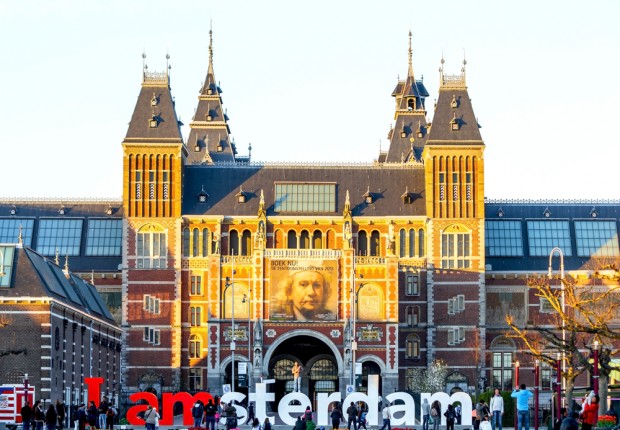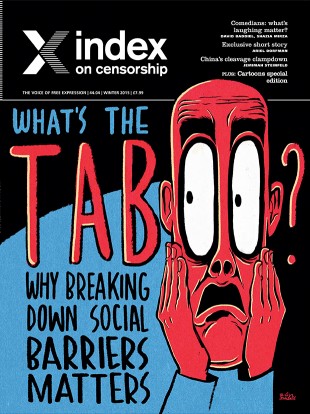Index relies entirely on the support of donors and readers to do its work.
Help us keep amplifying censored voices today.
Update: President Andrzej Duda of Poland signed the new law into effect on 7 January, 2016.
The undersigned press freedom and media organisations – European Federation of Journalists (EFJ), European Broadcasting Union (EBU), Association of European Journalists (AEJ), Reporters Without Borders (RSF), Committee to Protect Journalists (CPJ) and Index on Censorship – are outraged by the proposed bill, hastily introduced by the majority party in Poland on 29 December 2015 for immediate adoption, without any consultation, abolishing the existing safeguards for pluralism and independence of public service media governance in Poland.
The introduction of a system whereby a government minister can appoint and dismiss at its own discretion the supervisory and management boards goes against basic principles and established standards of public service media governance throughout Europe. If the Polish Parliament passes these measures, Poland will create a regressive regime which will be without precedent in any other EU country.
We consider that the proposed measures will represent a retrograde step making more political, and thus less independent, the appointment of those in charge of the governance of public service media in Poland.
We urge the Polish authorities to resist any temptation to strengthen political control over the media.
To date, Poland can boast an excellent track record in terms of freedom of the media, which ranks in the top category in the Reporters without Borders World Press Freedom Index 2015 as well as in the 2015 Freedom House report on political rights and civil liberties.
TVP reaches more than 90% of the Polish population every week and had about 30% of the TV broadcasting market in Poland in 2014, which is higher than in the case of most public TV channels in Central and Eastern Europe.
Signatories
European Federation of Journalists (EFJ)
European Broadcasting Union (EBU)
Association of European Journalists (AEJ)
Reporters Without Borders (RSF)
Committee to Protect Journalists (CPJ)
Index on Censorship
Click on the bubbles to view reports or double-click to zoom in on specific regions. The full site can be accessed at https://mappingmediafreedom.org/

Rijksmuseum, Amsterdam. Credit: Shutterstock / Littleaom
Amsterdam’s Rijksmuseum is in the process of removing terms visitors may find offensive, including “negro”, “dwarf” and “Indian”, from digitised titles and descriptions of around 220,000 pieces of artwork, replacing them with less racially-charged terminology.
The titles of 8,000 pieces of art on display were updated in time for the museum’s reopening in 2013 after a decade-long renovation, and the museum has now begun work to remove “offensive” language from the museum’s digitised collections.
This includes a 1900 painting by Dutch artist Simon Maris originally called “Young Negro-Girl” which will now be called “Young Girl Holding a Fan”.
The head of the Rijksmuseum Martine Gosselink, who initiated the project said: “The point is not to use names given by whites to others.”
“We Dutch are called kaas kops, or cheeseheads, sometimes, and we wouldn’t like it if we went to a museum in another country and saw descriptions of images of us as ‘kaas kop woman with kaas kop child’,” she added: “And that’s exactly the same as what’s happening here.”
Other words to be removed from the collections include Mohammedan, an old word for Muslim; and Hottentot, a name given to Dutch people by the Khoi people of South Africa, meaning stutterer.
In the latest issue of Index on Censorship magazine, which tackles taboos and the breaking down of social barriers, Kunle Olulode discusses the problems with editing out racist language from books and films. “Should we not accept that films and TV programmes set in the past will include some stereotypical images of minorities?”, he writes. However uncomfortable these words may seem, they should not be censored as they provide vital insights into history.
In late November 2014, Estonia’s parliament made a historic decision to launch a Russian-language TV-channel as part of ERR, Estonia’s public broadcaster. A year later the channel is a reality: ETV+, ERR’s third channel debuted on 28 September.
The launch passed quite quietly, compared to the reaction that greeted the decision to create the channel. There were discussions about what the opening of a Russian-language channel in Estonia would mean. Would it be a tool of government propaganda or a knitting together of Estonia’s two communities, Estonian and Russian speakers into one community? From Russia there were clear expectations of a counter-weight to Russian media, which is widely followed by Estonia’s Russian speakers.
Speaking at a media conference hosted by ERR in June 2015, the ETV+ chief editor Darja Saar — a Russian project manager with no media experience — described the goals of the new channel: “We gave up the classical media rules from the very beginning, when we decided that we are not going to tell people what is right or wrong. Instead, we will follow people’s wishes – they are tired of just words and want deeds.”
The new TV channel aims not only to be an informer, educator and entertainer in the mould of a classical public service broadcasting channel but a leader in society and a hands-on problem solver.
In its two months on air, though, ETV+ has operated mostly as a traditional TV-channel offering morning programmes, debates, films and news. As required by law, all programmes are subtitled in Estonian. While geared toward Estonia’s Russian speakers, the station’s audience is mostly ethnic Estonians. In its debut week, ETV+ attracted 294,000 viewers. Ethnic Estonians accounted for 217,000 of the total and the other 77,000 were other ethnicities. On an average day during its first week 97,000 watched ETV+. On 28 September, its first day, 120,000 tuned in to sample the new station’s offerings.
ERR board member Ainar Ruussaar pointed out that ETV+ is a long-term project to improve Estonian society and was not about ratings. Yet the failure to draw a larger share of the Russian-speaking audience in the country may put that mission in jeopardy.
ERR has a fraught history with Russian-language programming. Promotion of Estonian language and culture has always been one of its core values. This served it well while it was under the Soviet system. Later, it countered Russian propaganda. But while times changed, ERR did not sufficiently move away from its core. In the early 2000s, the broadcaster, then under budgetary pressures, cut its slate of offerings in Russian. For years after its sole Russian-language production was a little-watched news programme.
In 2007, there was a serious discussion about launching a new Russian-language station after the 27 April violence sparked by the removal of the Bronze Soldier, a World War II memorial in Tallinn’s city centre. Then the political decision in favour of the Russian-language channel in Estonian Television was only one step away and there was readiness in the Russian-speaking audience to watch it. But as the riots faded, funding to get the project off the ground faltered and the opportunity to tie Russian speakers into ERR was missed. The country’s then prime minister Andrus Ansip said it was too difficult to compete with Russian TV channels so ERR’s Russian-language offerings would be limited to radio.
ETV+ is dancing on the razor’s edge. If it covers politics too much it will raise the ire of politicians who could cut its funding. Too much pro-government propaganda could turn off the Russian-speaking audience. Lurking in the background are ratings challenges that could force it to air infotainment and entertainment programmes.
As ETV+ turns two months old, it remains to be seen how it will develop. But connecting with Estonia’s Russian-speaking citizens must be its first goal.
This article was originally posted at indexoncensorship.org
This article was updated on 5/1/16 to clarify ETV+’s viewership numbers.
|
Mapping Media Freedom
|

The winter 2015 issue of Index on Censorship magazine, focusing on taboos. Cover image by Ben Jennings
Join Index on Censorship for a taboo-busting evening at London’s best alternative venue – the Royal Vauxhall Tavern – to celebrate the launch of What’s the Taboo? – Index’s latest magazine featuring stories of the most controversial subjects from around the world.
With a panel that includes comedians Shazia Mirza and Grainne Maguire – we’ll be tackling tricky subjects – nudity, atheism, porn in China, mental health and racism could all be on the cards. If you want to explore and question who makes the rules when it comes to taboos – join us for what will be a dynamic evening exploring the unthinkable, the unmentionable and the unacceptable.
Following the panel event stick around for a special DJ set – Taboo Disco!
When: Wednesday 27 January 6:00pm – 11:00pm (6:00pm: Doors open & drinks; 6:30-8:00pm: What’s the Taboo?; 8:00-11pm: Taboo Disco DJ set)
Where: The Royal Vauxhall Tavern, 372 Kennington Lane, London SE11 5HY (map)
Tickets: Free but limited. Tickets must be booked in advance by emailing: [email protected]
More on the speakers:
 Shazia Mirza is an award-winning comedian and columnist. TV Appearances include: Have I Got News For You, F*** Off, I’m a Hairy Woman, NBC’s Last Comic Standing and Richard and Judy. In 2008, she was listed in The Observer as one of the 50 funniest acts in British comedy and won the GG2 Young Achiever of the Year Award. Her current show The Kardashians Made Me Do It is on tour at the moment.
Shazia Mirza is an award-winning comedian and columnist. TV Appearances include: Have I Got News For You, F*** Off, I’m a Hairy Woman, NBC’s Last Comic Standing and Richard and Judy. In 2008, she was listed in The Observer as one of the 50 funniest acts in British comedy and won the GG2 Young Achiever of the Year Award. Her current show The Kardashians Made Me Do It is on tour at the moment.
 Grainne Maguire is a stand up comedian and comedy writer. She has appeared on Stewart Lee’s Alternative Comedy Experience, Radio 4’s Now Show, Stephen K Amos’ An Idiots Guide, Front Row and Women’s Hour. Last year her campaign to tweet Taoiseach Enda Kenny her menstrual cycle to protest against Ireland’s abortion laws went viral.
Grainne Maguire is a stand up comedian and comedy writer. She has appeared on Stewart Lee’s Alternative Comedy Experience, Radio 4’s Now Show, Stephen K Amos’ An Idiots Guide, Front Row and Women’s Hour. Last year her campaign to tweet Taoiseach Enda Kenny her menstrual cycle to protest against Ireland’s abortion laws went viral.
Kunle Olulode is director of black campaigning infrastructure charity Voice4Change England. He is also a film historian and exhibitor and part of the BFI’s African Odyssey programming team.

Max Wind-Cowie is a writer and political consultant. He previously ran the Progressive Conservatism project at the thinktank Demos and has written for newspapers including The Guardian, and the London Evening Standard.